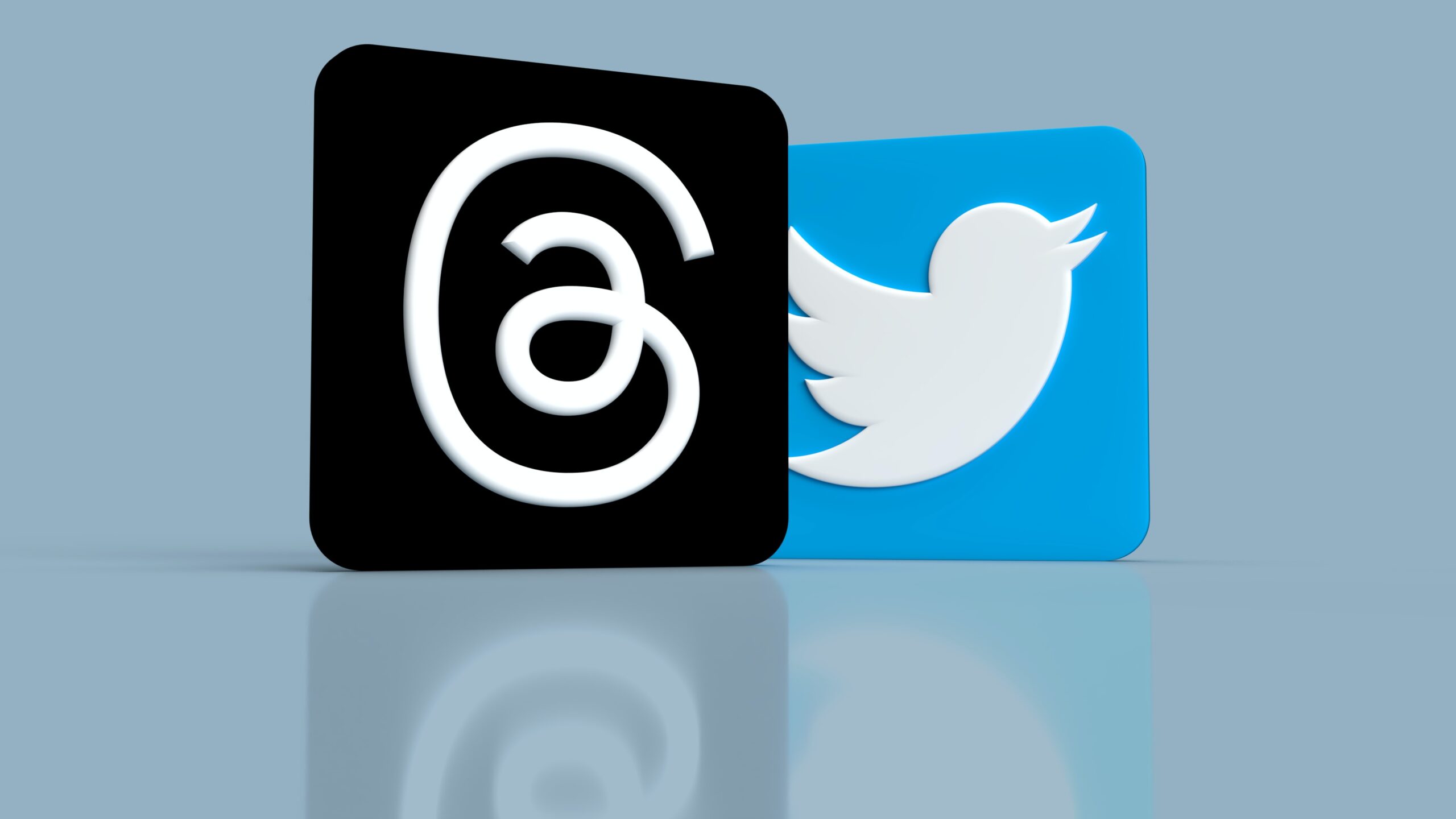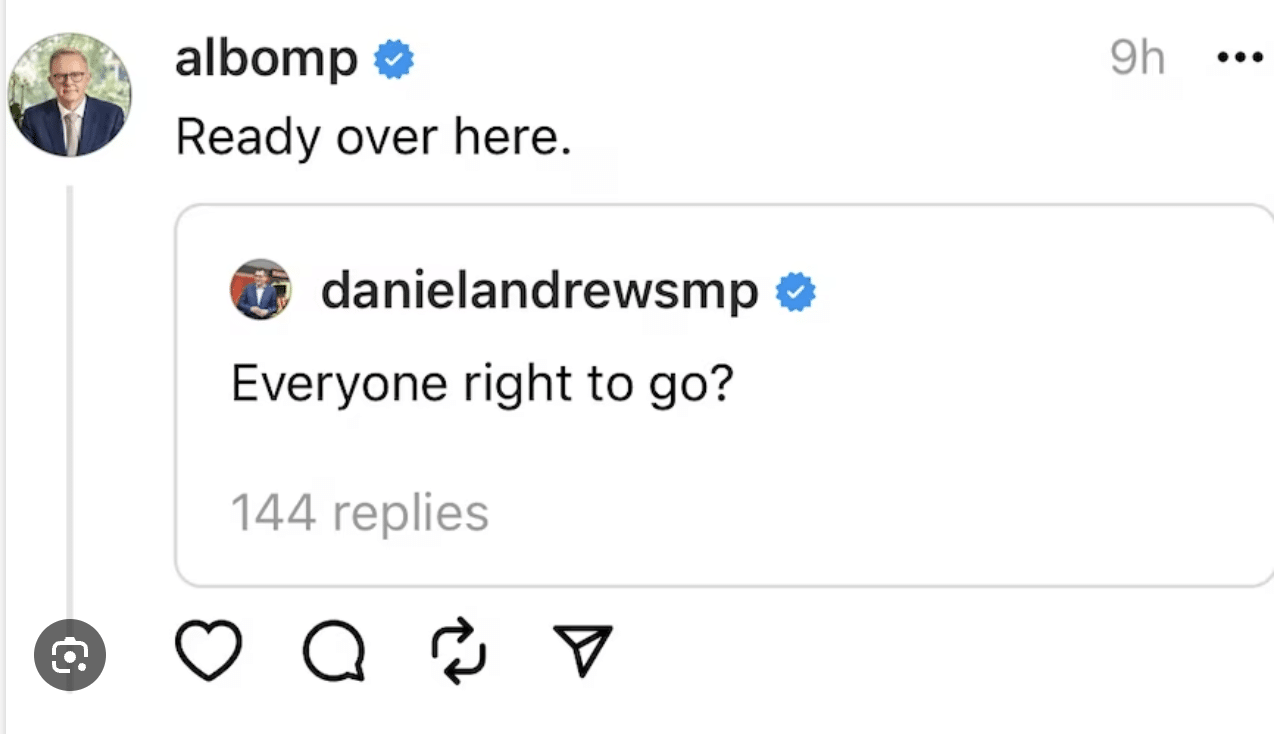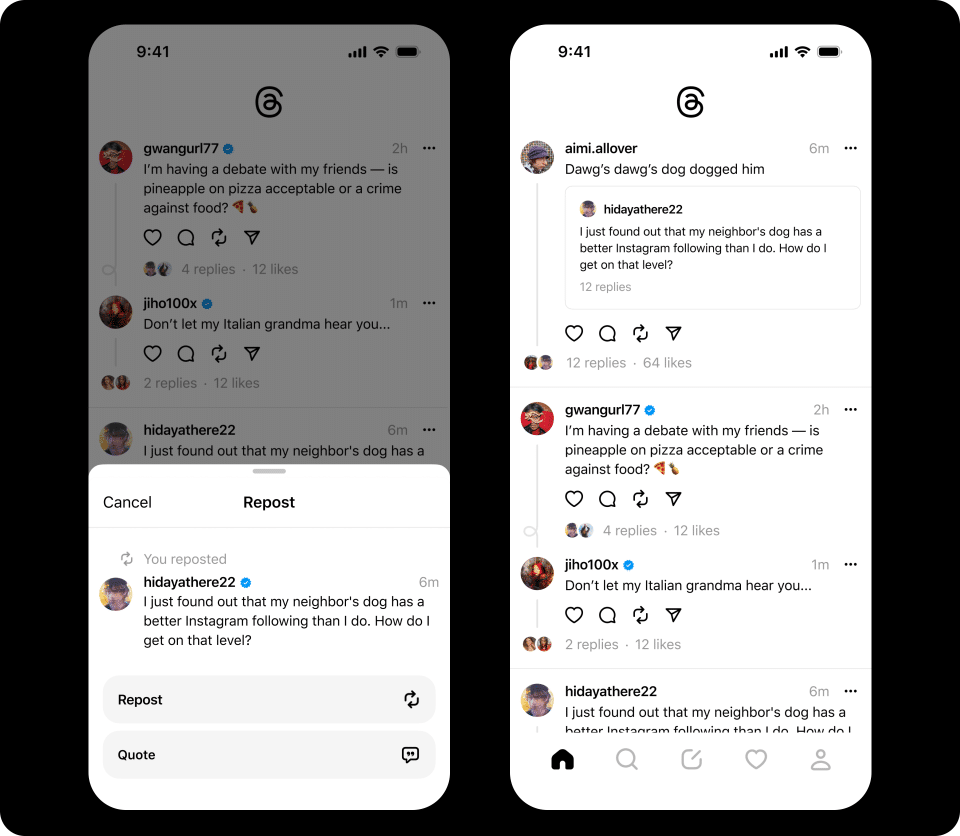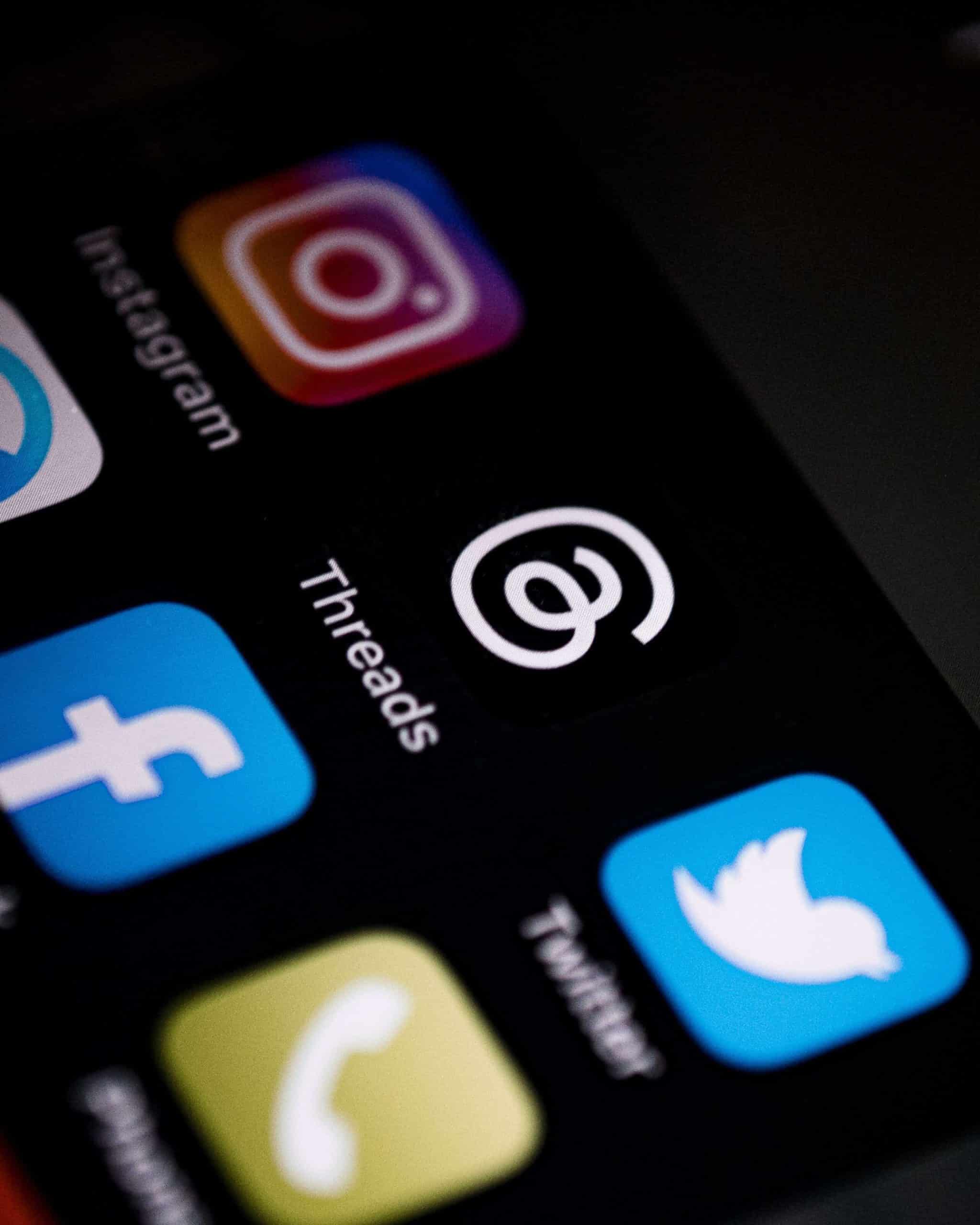Meta has shaken up the social media landscape with the launch of Threads, a text-based app that bears an uncanny resemblance to its rival Twitter.
This intriguing addition to the social media landscape has piqued our curiosity since its launch last week.
As the dust settles and the initial excitement subsides, we’ve had the opportunity to delve into Threads and unravel its unique features.
So far, the eerily Twitter-like experience is strange, and kind of fun.

What’s Threads all about?
Meta CEO Mark Zuckerberg announced the initial version of Threads, an app built by the Instagram team for sharing with text. While Instagram primarily connects users through photos and videos, Threads seeks to bring the same level of engagement to text updates.
Whether you’re a creator or a casual poster, Threads offers a new, separate space for real-time updates and public conversations. Users can share posts up to 500 characters long, with the ability to include links, photos, and videos up to 5 minutes in length.
In Meta’s words “We built Threads with tools to enable positive, productive conversations… Our vision with Threads is to take what Instagram does best and expand that to text, creating a positive and creative space to express your ideas… you can follow and connect with friends and creators who share your interests – including the people you follow on Instagram and beyond.”
Immediately following the launch, 30 million people signed up. It kept growing explosively over the weekend and hit 100 million sign ups within the first five days.
To put that into perspective, it took Facebook 852 days to reach 10 million users while Twitter reached that mark in 780 days.
Quick to jump on the Threads bandwagon were names like Oprah Winfrey, Kylie Jenner, the Dalai Lama, Jennifer Lopez, Michael Strahan and Ellen DeGeneres.
So, will Threads stand the test of time?
Will Threads face a similar fate to the beloved BeReal?
The numbers paint a compelling picture. According to app intelligence firm Apptopia, BeReal experienced a significant drop in daily active users, plunging from 20 million to 10.4 million between October 2022 and February 2023. The decline continued, reaching under 6 million active users by March.
The challenges faced by BeReal invite reflection.
Keeping up with the platform required considerable effort, and it’s not the only one grappling with issues. Social media as a whole finds itself in the midst of an identity crisis.
Twitter has witnessed a steady decline in users since Elon Musk’s takeover in 2022, while Instagram has lost its allure among younger generations.
Even TikTok, with its immense popularity, tends to attract a specific kind of content creator — those comfortable with engaging directly with the camera or unfazed by the proliferation of TikTok-isms that have permeated the platform.
Threads enters the fray. The question remains: Will it overcome the hurdles that have plagued its predecessors and carve its own path to success?
Threads vs. Twitter: the battle begins
Twitter CEO Elon Musk — who has recently been critical of Meta and Zuckerberg — reacted to Threads’ launch by implying that the app was nothing but a copy-paste of Twitter’s design. Twitter is now apparently threatening to sue Meta.

Let’s take a look at the key differences between Threads and Twitter
- Accessibility: While Twitter can be accessed on desktop too, Threads is available only on the app, and there are many other differences between the platforms that look the same on the surface.
- Login methods: On Twitter, you can log in using options like email, phone number, and even just a username. For now, there’s no other way to log in to Threads apart from your Instagram account. Threads cannot even be deleted without deleting your Instagram account.
- Multimedia sharing: Threads allows you to post more images and videos at once, whereas Twitter has a limit of 4 items per tweet. Threads lets you share 10 items in a single post, which is similar to the carousel posts on Instagram.
- Character limit: Twitter, infamous for its 140-character limit, increased it to 280 and now offers even more flexibility with Twitter Blue. However, Threads gives a hard stop at 500 characters.
- Private messaging: There is no way to text someone privately on Threads. It lacks in-app messaging that Twitter has.
- Hashtags and search: Unlike Twitter, Threads does not seem to use hashtags and does not have a feature that allows users to search for specific text or phrases.
- Feed display: Threads’ feed shows posts from everyone, irrespective of whether a user is following the account or not, whereas Twitter has two feed options: one curated based on user preferences and the other based on following.
- Interoperability: Threads is working toward making the app compatible with open, interoperable social networks.
- Early challenges: Upon signing up, the feed populates largely with accounts not yet followed, perhaps an issue that will resolve itself as more people sign up (or is it an intentional tactic?)
- Ad-free experience: Threads is (currently) an ad-free experience.
Considering if Threads is right for your business
It’s still too early to draw definitive conclusions, but Threads holds significant potential as a valuable tool for businesses. It offers an opportunity for businesses to build stronger relationships with their customers. By sharing personal and ephemeral content on Threads, businesses can create a more intimate connection and gain a deeper understanding of their customers.


Here are some things to consider before taking the Threads leap:
- Is your target audience already using Threads? If not, it may not be worth the time and effort.
- Threads is a free app, but you may need to invest in some additional features, such as location sharing or disappearing messages.
- Make sure your privacy policies are up to date and that you are transparent about how you are using Threads data.
If you decide that Threads is right for your business, here are a few tips for getting started:
- Start with simplicity: Avoid overwhelming your audience by trying to do too much with Threads initially. Take note of their response and engagement to gauge what resonates best.
- Embrace a personal and engaging approach: Threads is designed to foster a “close friends” atmosphere, so make sure your content reflects this sentiment. Share personal insights, behind-the-scenes moments, or exclusive peeks into your business. Encourage interaction and conversation by creating content that sparks genuine engagement.
- Authenticity over curation: Think more casual and unfiltered. It’s an opportunity to showcase the authentic side of your business. Let your brand’s personality shine through and don’t be afraid to show the human side of your company.
- Avoid sales-oriented content: Threads is not the place for direct sales pitches or overt promotional content. Instead, focus on building relationships and fostering connections with your audience. Threads is about creating an engaging experience, not a sales pitch.
Of course, there are also some risks associated with using Threads for business. For example, businesses need to be careful not to share too much personal information on the app. Additionally, businesses need to make sure that their employees are using Threads in a professional manner.
The road ahead for Threads
While its future remains uncertain, the initial traction and notable sign-ups indicate its potential for success.
Some people are excited about the potential for this new platform to allow for more intimate and focused communication with close friends. Others are sceptical, wondering if Threads will simply be a watered-down version of Instagram.
Overall, we’re cautiously optimistic about Threads.







